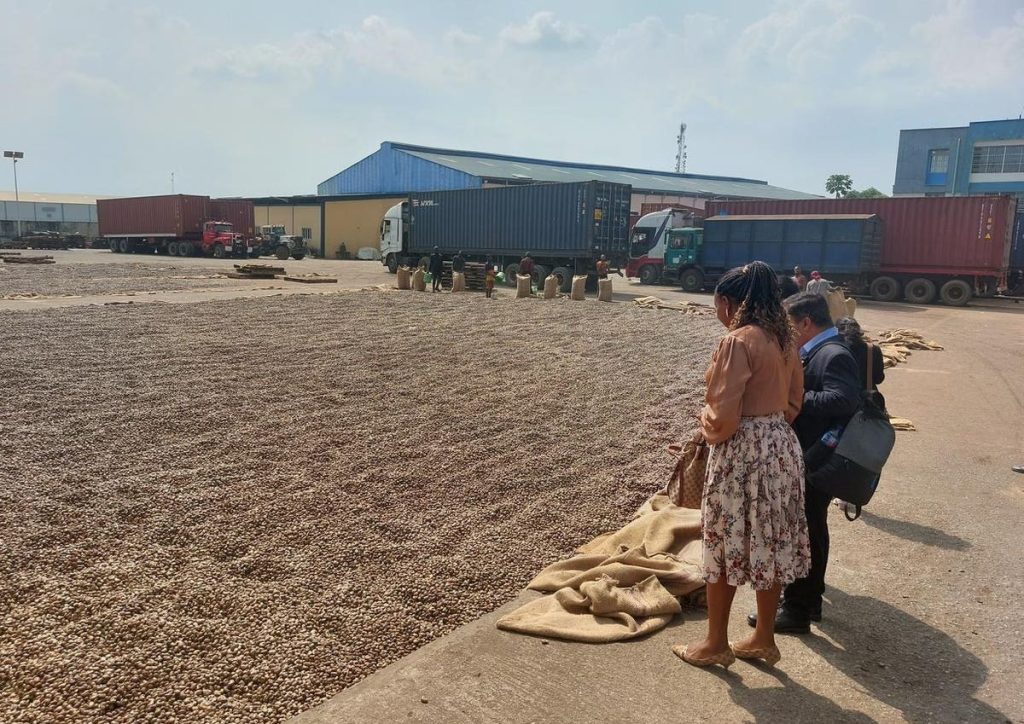How Africa Can Boost Manufacturing and Employ Sustainable Production in the Wake of the Ukraine Conflict
By Franklin Amoo & Rahul Kumbhani
The economic fallout from the ongoing conflict in Ukraine has impacted many sectors globally, and the manufacturing industry in Africa has not been spared. As a continent heavily reliant on imported goods, African economies have been particularly hard hit by the disruption of global supply chains caused by the conflict. The impact has been felt across various industries, from automotive to electronics, and most especially in grain, barley and other consumable soft commodities. Many countries in Africa depend on imports of components, materials, and finished goods, with Russia being one of the significant trading partners in the region; separately, food security in several African nations is heavily reliant on grain exports from the Ukrainian steppe traditionally shipped out of the Black Sea. The sanctions imposed on Russia by the US, EU and other countries have led to a decline in trade and investment, affecting manufacturing output on the continent. Meanwhile the war’s breakdown of Ukrainian exports has sharply disrupted food manufacturing value chains across the continent. All this has conspired to bring into acute focus both Africa and the broader world’s vulnerabilities in food production and critical manufacturing value chains.
To mitigate the impact of the crisis in Ukraine and reduce dependence on imports, African countries have the opportunity and ability to develop fully self-contained supply chains in a number of verticals within the continent itself. Furthermore, just as many OECD countries begin to develop plans reducing their dependency on critical nodes of crucial supply chains that are overly concentrated in East Asia, the African Continental Free Trade Area (AfCFTA
FTA
With both domestic and global factors conspiring to improve the financial returns to investing in domestic manufacturing capabilities across Africa, the possibility to re-orient the composition of the continent’s economies. African nations should seize the moment – prioritizing the implementation of AfCFTA and the integration of their markets while also enabling targeted investments in the production of select upstream value chain elements – such as petrochemicals, steel and beneficiated industrial metals – in order to seed new home-grown supply chains. By increasing the local production of both upstream inputs and finished goods, African countries can boost industrialization and increase the value of their exports. In addition to developing local supply chains, African countries can also incorporate themselves into the value chains of alternative suppliers of components and materials from countries and regions such as India, the European Union and Brazil. Diversifying supply chains by through the integration of African production nodes can reduce the impact of external shocks and enhance the competitiveness of African manufacturers in the global market.
This win-win investment opportunity allows Africa to increase its manufacturing output while reducing the world’s overreliance on existing low-cost production centers such as China for the global supply chain. As the world’s factory, China has been the go-to destination for many companies looking to outsource manufacturing operations. However, the COVID-19 pandemic and emerging geopolitical tensions have exposed the vulnerability of global supply chains to hyper concentration, highlighting the importance of production diversification. Africa’s relatively low manufacturing output and expected population surge over the next several decades offers the opportunity for significant growth and high returns on capital intensification. As the world searches for alternative manufacturing destinations, Africa should position itself as an attractive option. Low labor costs, abundant natural resources, and a rapidly growing youthful population make Africa a natural investment destination for manufacturers. The AfCFTA will empower African countries to leverage on their competitive advantages, market themselves as a production destination and develop niche industries. By offering an initial market to support the establishment of scale production, AfCFTA could play a crucial role in facilitating the development of local supply chains within the continent and production nodes that can be integrated into global value chains. By promoting regional integration and eliminating trade barriers, the AfCFTA will create economies of scale and increase intra-African trade. This, in turn, will encourage the development of a sustainable manufacturing sector that can compete with global supply chain giants such as China.
Africa can further compete by encouraging and enabling investment in future ready sustainable manufacturing approaches and staking out a leadership position in the emerging climate transition industry. Diversification away from China reliant production supply chains has arisen as a trend coincident with the accelerating consensus around the global climate emergency. Africa finds itself on the front lines of the sustainability wars: what is theoretical and the topic of debates across the developed world is lived reality on the retreating shores of shrinking Lake Chad and climate fuelled instability driving dislocation across the Sahel and beyond. This existential danger is paired with the fact that Africa is blessed with some of the highest solar insolation levels and commercially viable wind speeds on earth. Putting these factors together a few opportunities become evident. Sustainable approaches to the currently highly carbon intensive manufacturing industry will be critical to slowing the pace of carbon emissions. It is likely that regulatory requirements for the production of consumer goods will begin to aggressively align incentives to favor the sale of climate friendly manufactured products. Africa, essentially starting from scratch in its production endowment, can elect to pursue sustainable manufacturing as a competitive differentiator positioning itself proactively for the new terrain likely to emerge. Doing so would create opportunities for Africa to not only export sustainably manufactured products but also export green manufacturing machine tools, components and intellectual property.
Even more acute, a significant industry will soon emerge for both industrial and consumer products targeted at ameliorating, reversing and reducing the impact of climate change externalities. Everything from electric mobility and more efficient battery technology to tree canopy restoration and more sophisticated carbon credit schemes will become very big business. Africa, endowed with many of the industrial raw commodities critical to these emergent industries and at the front lines of the realization of the climate threat, is the natural home base for this development. As east Asia is to semiconductors and silicon wafers, Africa should seize the opportunity to be the hub for climate related product manufacture and innovation. Lithium, cobalt, tantalum, copper and manganese processing along with further value addition steps along the battery manufacturing supply chain along with innovation and research in afforestry should form a specific focus of AfCFTA policy planning. This should include intentional strategic investments by governments to encourage entrepreneurship in these areas as well as enabling incentives encouraging private sector development of these value chains on the continent.
Sanctions imposed on Russia, which include restrictions on the export of oil and gas, have led to many countries that depend on Russian oil to seek alternative sources of energy. This trend has spurred not only intense commercial discussions with African nations enjoying large reserves of natural gas, but also the adoption of green manufacturing practices as a way to reduce reliance on fossil fuels and curb carbon emissions. The European Union’s introduction of the carbon border tax further emphasizes the growing significance of green manufacturing. The tax, aimed at raising the cost of imports from high-carbon emitting countries, such as major manufacturing centers in Asia, underscores the importance of sustainable production methods and renewable energy sources. These are harbingers of the trade environment of the future and offer Africa a novel opportunity to carve out a defendable onramp to industrialization. By proactively embracing green manufacturing practices, African manufacturers can reduce their carbon footprint and gain an edge in the global market. Africa’s move toward green manufacturing presents an opportunity for the continent to develop practices that are more competitive than those in Asia. By adopting renewable energy sources, sustainable production methods, and circular economy practices, African manufacturers can improve their competitiveness while reducing their carbon footprint.
The crisis in Ukraine has had a significant impact on African manufacturing, with the disruption of supply chains affecting output and investment in the sector. However, the crisis also presents an opportunity for Africa to reduce its dependence on imports and an opportunity to investors in African manufacturing to enjoy differentiated returns by participating in the increase of Africa’s manufacturing share of output. By diversifying supply chains, investing in domestic manufacturing capabilities, and adopting green manufacturing practices, African nations can position themselves as attractive destinations for manufacturers looking to reduce their reliance on China and other global supply chain giants. This can not only contribute to the growth of the continent’s economy but also help to reduce the world’s carbon footprint and production insecurity in the long run.
Read the full article here















